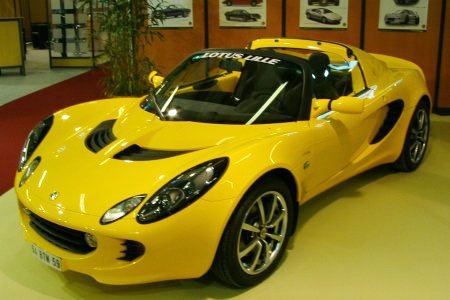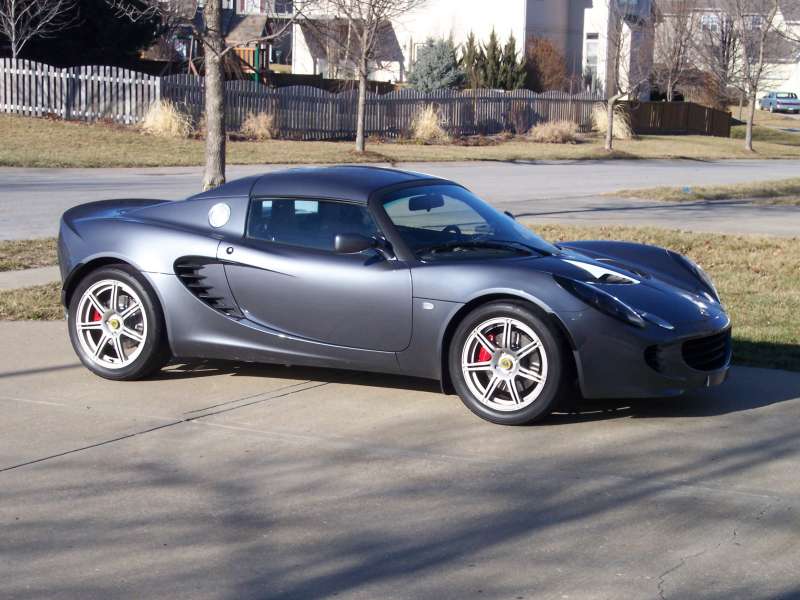Rome or Bust: We flog the new Lotus Evora from England to Rome and back.
For as long as most folks at Lotus Cars in Hethel, England, can remember, most everyone has eaten lunch in the office, worked eight-and-a-half hours Monday through Thursday, and then taken off the rest of the day at noon on Friday.
So a weekend at Lotus works out to two-and-a-half days. In the late ’80s, the company’s CEO, Michael Kimberley, suggested to his engineers a new approach for putting miles on Elan prototypes: Leave Hethel at noon and drive to Rome and back, a 2500-mile jaunt. Just be back in your cubicle on Monday morning with a picture of the car at the Colosseum.
Even Lotus’s devoted, monk-like engineers weren’t thrilled with the idea of living in an Elan for two days. The trips were not without setbacks: Once an Elan prototype’s exhaust snapped in half near Lyon, in France. The Lotus suffered the indignity of limping into a Renault repair garage, exhaust dragging and engine blaring. Then the Hethel crew, which spoke no French, had to mime the problem to the perplexed French repairman. Hours later, after an exchange of francs and Lotus-branded pens and key chains, they were back on the road, the exhaust system welded back together.
A new Lotus model is rare—about as rare as using the words “practical, refined, reliable, and comfortable” to describe the car without the prefixes “im” and “un” in place. For more than 50 years, Lotus’s cars have pushed intoxicating levels of performance and handling, but a general lack of practicality, refinement, reliability, and comfort often left owners feeling exhausted and hung over.
The new Evora held the promise of being different, modern. The idea was to maintain the rabid Lotus-grade handling and performance but throw in a livable interior, a back seat, more room, and the sort of civility that might appeal to Porsche drivers. So how, we wondered, would this new Lotus fare at continually high speeds all the way to Rome and back? Could a Lotus actually be comfortable over 2500 miles? Or would it revert to its old tricks—shedding parts, splitting exhausts, or worse, quitting entirely and forcing us to hitchhike home? We figured we should bring along some Lotus pens just in case.
After a red-eye from Detroit to London and a two-and-a-half-hour, 136-mile trip by car northeast to rural Hethel in Norfolk, I arrive at the gates of the former U.S. Air Force base that frugal Lotus founder Colin Chapman, now long departed, turned into company headquarters in 1966.
And there’s my Evora, sitting silently in a steady rain. This new model is a stylistic departure from the Elise and the Exige—it’s more maturely penned, looking very unlike a wheeled water bug. Like the Elise and the Exige, the Evora sits low, the front of the car barely at shin height, the tops of the front fenders about knee-high.
Getting in doesn’t require the Cirque du Soleil training that the Elise and the Exige do, but slipping between the wide side sills and the steering wheel remains more challenging than getting into any Porsche. There are still some dollar-store touches inside: cheap-looking window switches, the Ford-sourced turn-signal and wiper stalks. But overall, the interior has a style and quality that wouldn’t look out of place in an Audi.
Firm and snug Recaro seats and a tilting and telescoping wheel adjust easily for a comfortable driving position. Looking out, the huge windshield seems to end at your feet; the view ahead is panoramic, interrupted only by the tops of the front fenders, which serve as reference points. When seated on the wrong side of a car and driving on the wrong side of the road—all the while circling London’s Heathrow Airport waiting for a photographer—it’s always useful to know where the front of the car is.
Lensman Tom Salt arrives, and I’m stunned by the amount of gear he has brought along. Kim Kardashian probably packs lighter. The Evora’s six-cubic-foot trunk verges on useless, so we just cram our gear into the 23-cubic-foot back seat. Lotus claims the rear seat is usable by a fifth-percentile female, which basically means that if you’re over five feet tall, riding back there is only slightly better than being waterboarded.
We head into London, just in time for the stress of rush hour. We’re looking for backdrops to prove we’ve been here, so we aim toward Big Ben. That taken care of, we drive southeast out of London, then crawl in traffic for a few hours, and—finally—we sweep onto the M20, which looks like freeways do everywhere else. Fifty uneventful miles later, we tool into Folkestone and the entrance to the great tunnel built under the English Channel. Beyond it is France.
So a weekend at Lotus works out to two-and-a-half days. In the late ’80s, the company’s CEO, Michael Kimberley, suggested to his engineers a new approach for putting miles on Elan prototypes: Leave Hethel at noon and drive to Rome and back, a 2500-mile jaunt. Just be back in your cubicle on Monday morning with a picture of the car at the Colosseum.
Even Lotus’s devoted, monk-like engineers weren’t thrilled with the idea of living in an Elan for two days. The trips were not without setbacks: Once an Elan prototype’s exhaust snapped in half near Lyon, in France. The Lotus suffered the indignity of limping into a Renault repair garage, exhaust dragging and engine blaring. Then the Hethel crew, which spoke no French, had to mime the problem to the perplexed French repairman. Hours later, after an exchange of francs and Lotus-branded pens and key chains, they were back on the road, the exhaust system welded back together.
A new Lotus model is rare—about as rare as using the words “practical, refined, reliable, and comfortable” to describe the car without the prefixes “im” and “un” in place. For more than 50 years, Lotus’s cars have pushed intoxicating levels of performance and handling, but a general lack of practicality, refinement, reliability, and comfort often left owners feeling exhausted and hung over.
The new Evora held the promise of being different, modern. The idea was to maintain the rabid Lotus-grade handling and performance but throw in a livable interior, a back seat, more room, and the sort of civility that might appeal to Porsche drivers. So how, we wondered, would this new Lotus fare at continually high speeds all the way to Rome and back? Could a Lotus actually be comfortable over 2500 miles? Or would it revert to its old tricks—shedding parts, splitting exhausts, or worse, quitting entirely and forcing us to hitchhike home? We figured we should bring along some Lotus pens just in case.
After a red-eye from Detroit to London and a two-and-a-half-hour, 136-mile trip by car northeast to rural Hethel in Norfolk, I arrive at the gates of the former U.S. Air Force base that frugal Lotus founder Colin Chapman, now long departed, turned into company headquarters in 1966.
And there’s my Evora, sitting silently in a steady rain. This new model is a stylistic departure from the Elise and the Exige—it’s more maturely penned, looking very unlike a wheeled water bug. Like the Elise and the Exige, the Evora sits low, the front of the car barely at shin height, the tops of the front fenders about knee-high.
Getting in doesn’t require the Cirque du Soleil training that the Elise and the Exige do, but slipping between the wide side sills and the steering wheel remains more challenging than getting into any Porsche. There are still some dollar-store touches inside: cheap-looking window switches, the Ford-sourced turn-signal and wiper stalks. But overall, the interior has a style and quality that wouldn’t look out of place in an Audi.
Firm and snug Recaro seats and a tilting and telescoping wheel adjust easily for a comfortable driving position. Looking out, the huge windshield seems to end at your feet; the view ahead is panoramic, interrupted only by the tops of the front fenders, which serve as reference points. When seated on the wrong side of a car and driving on the wrong side of the road—all the while circling London’s Heathrow Airport waiting for a photographer—it’s always useful to know where the front of the car is.
Lensman Tom Salt arrives, and I’m stunned by the amount of gear he has brought along. Kim Kardashian probably packs lighter. The Evora’s six-cubic-foot trunk verges on useless, so we just cram our gear into the 23-cubic-foot back seat. Lotus claims the rear seat is usable by a fifth-percentile female, which basically means that if you’re over five feet tall, riding back there is only slightly better than being waterboarded.
We head into London, just in time for the stress of rush hour. We’re looking for backdrops to prove we’ve been here, so we aim toward Big Ben. That taken care of, we drive southeast out of London, then crawl in traffic for a few hours, and—finally—we sweep onto the M20, which looks like freeways do everywhere else. Fifty uneventful miles later, we tool into Folkestone and the entrance to the great tunnel built under the English Channel. Beyond it is France.



















































